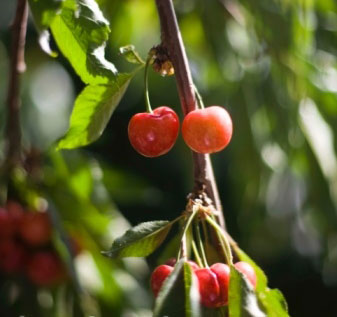Pruning of trees is important for many different reasons. In particular, fruit trees benefit from pruning and most experts advise periodic pruning. Trees that have been pruned in the past, should continue to be pruned to ensure that the branches do not become convoluted and unhealthy which can even cause the trees to die in some cases.
Why to Prune?
Control the size: The control of the size of a tree is one of the main reasons for pruning. This will ensure that more trees can survive and thrive in a given space (very important for orchards or gardens with limited size). Proper pruning trains the tree to grow in a certain controlled way.
Remove damaged part: Another important reason for pruning is to remove dead, diseased or damaged wood from trees. This can help to improve the longevity of trees. After pruning there is less likelihood of damage or breakage among weaker branches due to snow, ice or the weight of fruit.
 Stimulate growth: Pruning can help stimulate growth of fruit buds and flowers. So periodic pruning can help to increase fruit yield. Pruning low growing branches so that they don’t touch the ground is also important for self evident reasons.
Stimulate growth: Pruning can help stimulate growth of fruit buds and flowers. So periodic pruning can help to increase fruit yield. Pruning low growing branches so that they don’t touch the ground is also important for self evident reasons.
Give desirable structure: Pruning of younger cherry trees will help create a mature tree with desirable structure and form, so there is less need for corrective pruning in its mature years.
Prevent fungal infection: Cherry trees are particularly prone to certain fungal infections and diseases. Proper pruning can help prevent this.
How to Prune?
Early spring or later winter is the time that most experts suggest is right for cherry tree pruning. Pruning should be avoided in spring before flowering since this will prevent proper blossoming and reduce fruit yield. Some experts also recommend that cherry trees be pruned in summer after the fruiting season to help prevent infection and disease; however this pruning should be sparing and light.
Many experts recommend that cherry trees should be pruned in a vase or scaffold shape. Ideally branches between layers of the tree should be cut back to allow the circulation of air and to allow sunlight to penetrate into the inner branches of the tree.
To prune cherry trees, it is recommended that you make cuts flush with nearby branches without leaving stubs in a way that water drains off easily from the cut surface. Use proper tools for pruning, and after pruning use a pruning paste (non asphalt based) to seal the pruned branches and prevent fungal or bacterial infestations.



